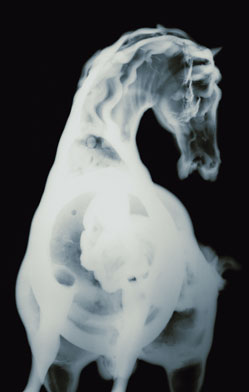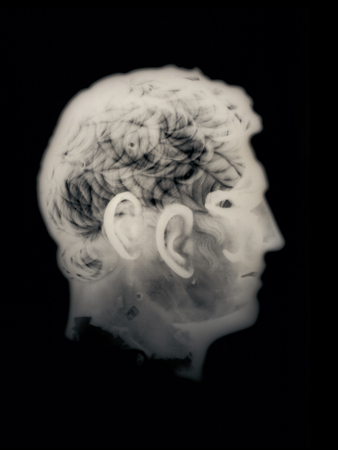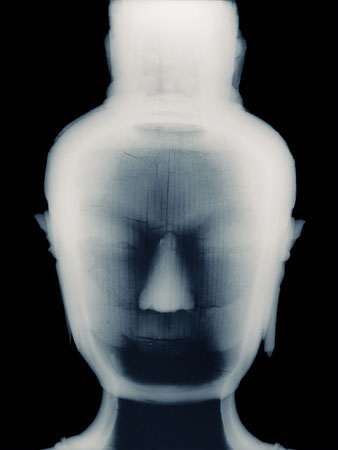 |
There is a unique relationship between photography and the invisible. Beginning in the late Victorian era, “spirit” photographers used tricks — like double exposures and treating photographic plates with radiation – to make visible “auras”, phantoms,and the otherwise otherworldly realm. When the X-ray was discovered (accidentally) by Conrad Rontgen in 1895, it helped to establish photography as a legitimate tool for medicine, rather than a gateway to the supernatural. Yet its effect – imagining something inherent that eye cannot otherwise see – echoed the paranormal qualities at play in occult photography. As history would have it, the technology which should have disproved the methods of spirit photographers was instead adapted into their repertoire. Indeed from the pragmatic and the fantastical, the X-ray has served many overlapping functions.
 |
 |